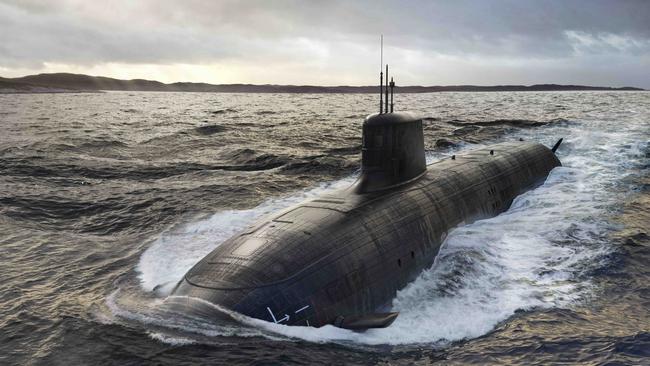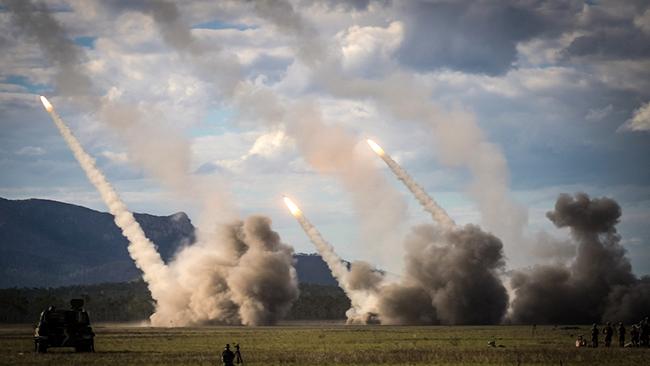Richard Marles is on the defensive over an opaque, slow weapons plan


On the surface, the $330bn plan covers everything you’d expect. Nuclear submarines? Tick. New surface ships? Yep. Money for missiles and drones? Check.
Delve a little deeper and it raises more questions than gives answers.
The previous version of the plan, released by the Coalition in 2020, had charts throughout, matching funding to specific Defence programs and setting out delivery timelines.
The new one lumps programs together, has no detailed timelines, and is set out in such a way that it can’t be compared to the 2020 edition.
Take air and missile defence. Iran’s strike on Israel last Saturday showed how important such systems have become. You’d think that’d be a high priority for a plan to modernise the force, yet the document suggests billions in cuts to planned spending on medium-range and ballistic missile defence, while making it impossible to be sure what’s missing.

The new 10-year plan includes $72bn in “reprioritisations” – aka cuts – of previous program funding, but you won’t find a list of what’s been slashed anywhere in the document.
Defence Industry Minister Pat Conroy’s office belatedly provided a summary of $40.5bn worth of cancelled projects on Wednesday night. Some were known, like last year’s $10bn cut to infantry fighting vehicles, and some weren’t, like the decision not to buy more joint strike fighters.
So where are the remaining $31.5bn worth of dumped or re-scoped programs?
Some are classified, the government says. Disclosing others will require it to break the news first to the contractors that thought they had the work.
The investment plan was released with a new defence strategy that warns of rising Chinese coercion, and the growing risk of a conflict over Taiwan.
Defence Minister Richard Marles told the National Press Club that growing tensions between China and the US were “creating an environment where the risk of miscalculation is more ominous and the consequences more severe”.
But don’t ask him why, if the threat level is unprecedented and continues to rise, that 90 per cent of Labor’s $50bn in extra funding for Defence is in the second half of the decade. Or point out that Labor’s $5.7bn funding boost over the next four years will struggle to keep pace with inflation.
“You can describe it in the way in which you have, but it flies in the face of the decisions that have had to have been made by Defence ministers for decades and decades,” Marles said to this reporter.
He went on to attack unnamed commentators who warn that Australia could face a “worst case contingency” in the short term, saying such analysis “lacks wit” because Australia isn’t a peer to the US or China.

Australia’s challenge, Marles added, was to have the capabilities in place to “resist coercion and maintain our way of life”.
If that’s the case, why bother with nuclear-powered subs?
The government makes much of the fact that its plan will lift defence spending to 2.4 per cent of GDP by 2034, compared to 2.1 per cent under the Coalition’s spending trajectory.
This misleading projection belies the fact that the Coalition, if it won office, would have updated its numbers over time in light of worsening circumstances.
Marles says rebuilding the Defence Force is the government’s “historic mission”, saying the spending program has been redesigned from the ground up, but Strategic Analysis Australia research director Marcus Hellyer says it’s far from a new plan.
“Labor’s additional $5.7bn over four years, and $50.3bn over the decade, is just being applied to the existing funding line they inherited from the previous government, which was generated as part of the 2016 white paper, which was developed in 2015,” he said.
“This is not a zero-based rebuild of the Defence investment program or the Defence budget. It’s a nine-year-old program that they just continue to adjust.”

On the positive side, Labor is addressing the Coalition failure to match promised new capabilities with funding, winding back so-called “over-programming” from 40 per cent to a more prudent 20 per cent of the budget, to allow for reasonable program delays.
The AUKUS nuclear program is represented for the first time in the investment plan (up to $63bn over the decade), along with promised new general purpose frigates (up to $10bn), and the cost of domestic guided weapons production has been lifted from $1bn under the Coalition to a more realistic $16bn-$21bn.
These major new expense items account for the lion’s share of the new funding and much of the savings. Yet the subs and frigates won’t be in use for a decade or more, and guided weapons production will take years to wind up. If there’s a worst case contingency in the meantime, the ADF will have to go to war with what its got.


Labor promised to bring back transparency and accountability but its new Defence investment plan is the most opaque yet.